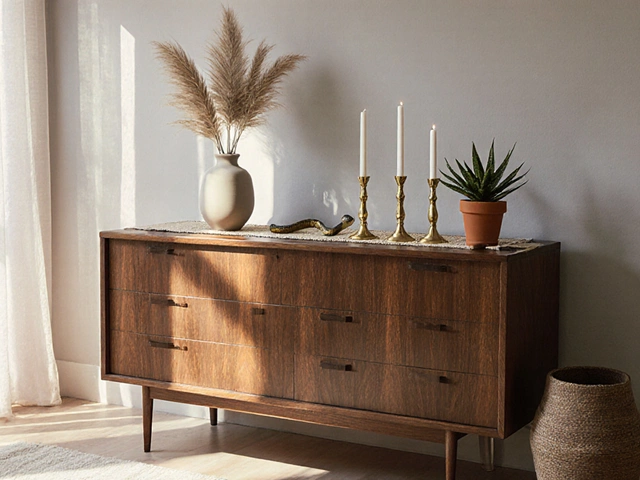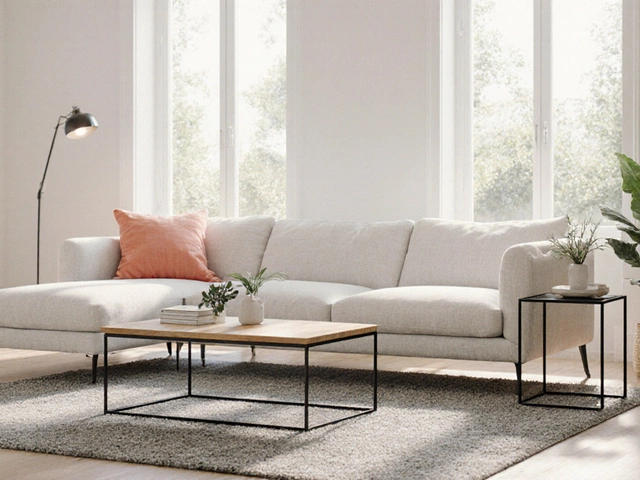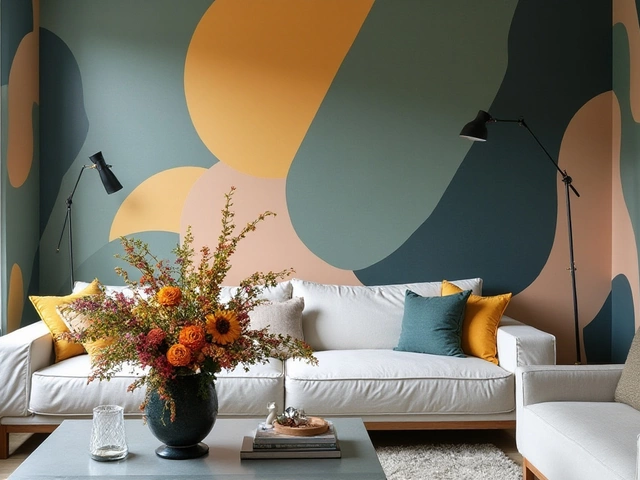Ever wonder why some people call themselves interior designers after a couple online courses, while others spend years grinding away at college? The path isn’t one-size-fits-all, but there are a few things you need to know before jumping in.
The time you’ll spend in college depends on the kind of interior design job you want and where you want to work. Some jobs need just an associate’s degree, which takes about two years. Most bigger firms—and the states that regulate interior design—expect a bachelor's. That’s your typical four years on campus, sometimes stretched to five if you snag a ton of internships or go part-time.
There are states with strict rules for who can call themselves a licensed interior designer. In those cases, you’ll need not just a degree but maybe a year or two working under a pro before you’re even allowed to take the licensing exam. If red tape makes you shudder, here’s a fun fact: around half the states in the U.S. don’t require a license at all. You can dive right in after school, as long as you’ve got a solid portfolio.
- What Does an Interior Designer Do?
- College Degrees: Your Main Path In
- How Many Years Does It Really Take?
- Licensing, Certification, and Shortcuts
- Building Experience: Beyond the Classroom
- Tips for a Head Start in Interior Design
What Does an Interior Designer Do?
A interior designer isn’t just someone who picks out colors and throws pillows around. They plan, design, and organize spaces in homes, offices, restaurants—even hospitals—so these places don’t just look amazing, but also work well for the people using them.
Their job actually starts way before choosing furniture. They meet clients to find out what they really need from a space. After figuring all that out, a designer maps out floor plans, keeps track of a budget, and sometimes even works with architects and contractors. If you thought all their work is about picking curtains—or scrolling Pinterest—think again.
Here’s what a typical day for an interior designer could include:
- Talking to clients about their needs, ideas, and budget
- Measuring rooms and creating digital or hand-drawn floor plans
- Choosing flooring, lighting, wall finishes, furniture, and decor
- Coordinating with builders, electricians, or plumbers to make sure designs are doable
- Ordering and sourcing stuff so it all arrives on time
- Checking on-site to make sure the final setup matches the plan
One thing that surprises a lot of people? Including stuff like accessibility (think wheelchair ramps), safety codes, and even eco-friendly materials. It’s more about solving real-life problems than making things "pretty." Interior designers also use tech daily—popular programs include AutoCAD, SketchUp, and Revit—for designing plans and 3D models.
| Task | Time Spent (avg %) |
|---|---|
| Client Meetings | 20% |
| Design & Drawing | 30% |
| Product Sourcing | 15% |
| Project Management | 20% |
| Site Visits/Install | 15% |
This line of work can be super satisfying for creative types but you’ll need strong communication, planning, and time management skills—way beyond just a good eye for style.
College Degrees: Your Main Path In
If you're really serious about being an interior designer, a college degree is the most common route. Most professionals kick things off with either an associate’s or a bachelor’s degree in interior design. Here’s the breakdown:
- Associate’s degree: This option takes about two years. You’ll usually find programs at community colleges or technical schools. You learn basic design, some CAD (computer-aided design), and how to plan and furnish a space. It’s a good starting point if you want to work as an assistant, but not always enough to qualify you for official licensing.
- Bachelor’s degree: This is the gold standard in the industry. Most employers and state licensing boards want to see a bachelor’s degree in interior design or a related field. This takes four years, and the curriculum covers architecture history, color theory, building codes, and hands-on studio work. Some programs even link up with local firms for real-world experience.
The Council for Interior Design Accreditation (CIDA) stamps its approval on top programs. If you go to a CIDA-accredited school, you’re set up for both the workplace and licensing exams down the line. Think of it like a quality check—employers definitely notice it.
Wondering what classes you’ll actually take? Here’s a quick look at some of the main courses:
- Space planning and layout
- 3D digital modeling (AutoCAD, SketchUp)
- Materials and textiles
- Lighting and environmental systems
- Building codes and safety
- Project management
You don’t have to limit yourself to interior design majors either—degrees in architecture or even fine arts can get your foot in the door, especially if you pair them with an interior design minor or plenty of design projects for your portfolio.
Here’s an example table showing how long typical programs run and what doors they open for you:
| Degree Type | Typical Duration | Career Options |
|---|---|---|
| Associate's | 2 years | Design Assistant, Draftsperson, Entry-Level Residential Designer |
| Bachelor's | 4 years | Certified Interior Designer, Design Project Manager, Commercial Designer |
If you want a shot at the best jobs or plan to work in commercial design, aiming for the bachelor's is a safer bet. But starting with an associate’s can still score you a spot in the field and might save you money early on—some folks even transfer credits to grab a bachelor's later without wasting time or cash.
How Many Years Does It Really Take?
If you’re shooting for a career as an interior designer, you’re probably wondering how long you’re supposed to be in college. Here’s the quick answer: if you go full-time and don’t take breaks, you’re looking at 2 to 4 years, depending on the type of degree.
For an associate’s degree, you’ll need about 2 years. This covers the basics—think color theory, drafting, space planning. If you want to land jobs with bigger companies or move up faster, most people aim for a bachelor’s degree. That’s usually 4 years, and you dive deeper into design, history, lighting, computer-aided design (CAD), and even some business classes.
Here’s how it typically breaks down in the U.S.:
| Degree Type | Years to Complete |
|---|---|
| Associate's Degree | 2 years |
| Bachelor's Degree | 4 years |
| Master's Degree (Optional) | +2 more years |
Some people try to speed things up with summer classes or heavier course loads, but honestly, most students need the full amount of time—especially with projects, internships, and studio work eating up extra hours.
If you’re hoping to skip the college route altogether, keep in mind: most firms and high-paying gigs really prefer those with a degree. In states where you want to get licensed, you’ll need both the degree and a set amount of supervised work experience right after college, usually about 1-2 more years. So for a fully licensed interior designer in those places, the entire process might take up to 6 years total.
Bottom line: Plan on at least 2 years for entry-level, 4 years if you want the full interior design degree experience, and a few more years if you’re chasing an official state license. Make sure to check your state’s rules before banking on any shortcuts.

Licensing, Certification, and Shortcuts
The rules for becoming a interior designer with an official title or license are all over the place, depending on where you plan to work. Some states in the U.S. want you to go that extra mile with licensing—others just care about your skills and your hustle.
In regulated states, you’ll need something called the NCIDQ (National Council for Interior Design Qualification) certification. To even sit for this exam, you’ve got to check off a few boxes:
- Bachelor’s degree in interior design from an accredited program (usually 4 years).
- Some states will accept an associate’s but with more work experience.
- At least 2 years (about 3,520 hours) of work under a licensed interior designer.
Here’s how the time usually breaks down:
| Degree Type | Required Experience | Total Years (College + Experience) |
|---|---|---|
| 4-Year Bachelor’s | 2 years | 6 years |
| 2-Year Associate’s | 3-4 years | 5-6 years |
But now—what if you live somewhere chill, where interior design degree isn’t a must-have for launching your business? Around half the states don’t require a license to work with most residential projects. You can cut straight to building that portfolio and finding clients. And don’t forget online courses: Some aspiring designers skip four-year schools and take certificate programs that last just a year or so. Not every job will take you seriously, but for self-employed designers or folks working with smaller firms, it’s a real shortcut.
If you want to maximize your odds, think about joining the American Society of Interior Designers (ASID) or the International Interior Design Association (IIDA). These memberships don’t replace your education or licenses, but they open up a ton of networking and learning opportunities.
Summary? Where you live and work matters a lot. If you want to call yourself a “Certified” or “Licensed” interior designer, plan for more schooling and work experience. If you just want to design cool spaces and skip the paperwork, some places and smaller businesses won’t ask for anything beyond impressive work and drive.
Building Experience: Beyond the Classroom
Textbooks only take you so far in interior design. What really counts is what you do in the real world. Interior design firms hire people based on projects they've actually done, not just what grades they got. So, getting hands-on as early as possible makes a difference.
Internships are a big deal. Most college programs push you to get at least one, but the truth is it pays off to do more than the bare minimum. The American Society of Interior Designers (ASID) recommends at least two different internship experiences during college. This way, you get to see different styles of design work, understand how firms run, and maybe even figure out what type of design you like best—think homes, offices, hotels, or even restaurants.
- Freelance projects: Even if it’s just helping a neighbor or volunteering at a community center, small projects beef up your portfolio.
- Summer jobs or part-time gigs: There are furniture stores, showrooms, and even construction companies that love having design students on the floor. You get paid and learn on the spot.
- Design competitions: There are loads of them—from local home and garden shows to bigger national contests. Winning or even just entering one gives you a huge credibility boost.
- Shadowing pros: Look up local interior designers and ask to tag along for a week. It's networking and learning rolled into one.
Collaboration with architects, builders, or digital rendering teams also helps a lot. Some colleges have partnerships with local businesses, but even if yours doesn’t, nothing stops you from reaching out. If you’re into data, here’s something cool: The Council for Interior Design Qualification says over 80% of new designers who finish two internships land jobs within a year of graduation, compared to only about 55% who don’t intern at all.
| Experience Type | Percent of Students Finding Jobs Within 1 Year |
|---|---|
| Multiple Internships | 80% |
| No Internship | 55% |
And don’t sleep on your portfolio. Start building it early, and keep it fresh. Snap good before-and-after shots of even your smallest projects, and include sketches, mood boards, or 3D models. Employers want to see your process, not just the end result.
Tips for a Head Start in Interior Design
You don’t have to wait until you’re in college to get your foot in the door as an interior designer. There are smart ways to build skills, experience, and connections early.
- Shadow a Pro: Reach out to local interior design firms. Offer to help out, even if it's just cutting fabric samples or organizing showrooms. You’ll get hands-on exposure and a peek at real projects.
- Take High School or Community Classes: Some high schools offer design basics as electives. Local community centers or online platforms like Skillshare and Coursera have affordable courses in everything from sketching to design software.
- Get Comfortable with Design Tools: Start playing with programs like SketchUp, AutoCAD, or even free versions like Roomstyler. Most employers expect you to know your way around these tools.
- Build a Portfolio Early: Keep photos of any design project you do, even if it’s just rearranging your bedroom or helping a friend decorate. Employers love seeing your actual work, not just grades.
- Network: Join online forums or local chapters of organizations like the American Society of Interior Designers (ASID). Many offer student memberships, scholarships, and meetups.
- Stay on Top of Trends: Follow design blogs, magazines, and Instagram accounts. Check out Houzz or Dezeen to see what professionals are buzzing about right now.
Here’s a fun fact: according to the National Center for Education Statistics, over 75% of entry-level interior design jobs require a bachelor’s degree, but more than half of practicing designers started building their skills before college even started.
| Action | Best Time to Start | Why It Matters |
|---|---|---|
| Shadowing Designers | High School | Real-world exposure |
| Learning Software | Anytime | It's an industry must-have |
| Portfolio Projects | High School / College | Makes you stand out for internships |
| Networking | Early as possible | Opens doors for jobs and mentorship |
The earlier you get involved, the faster you’ll find your style and build those connections that get you hired. Don’t be shy—most designers love helping out someone eager to learn. And if you’re not sure where to start, just try something simple like updating your own space and snapping some before-and-after pics for your portfolio. Every bit counts!








